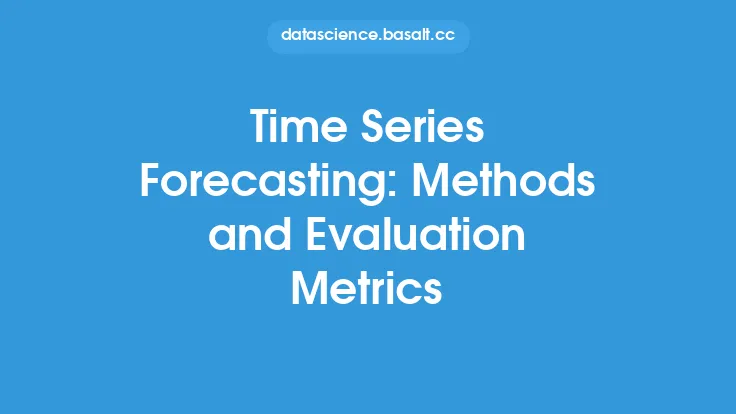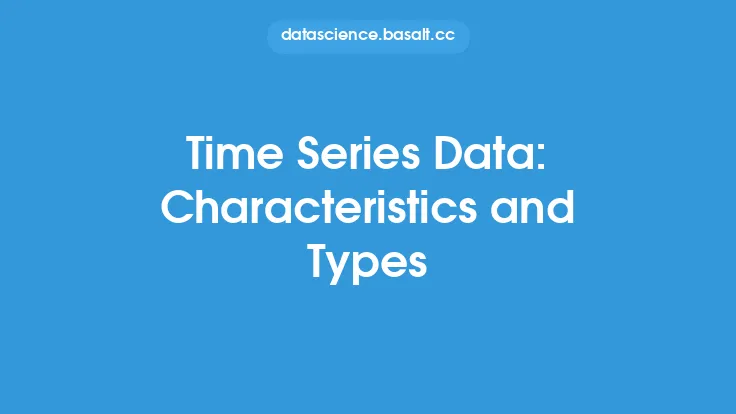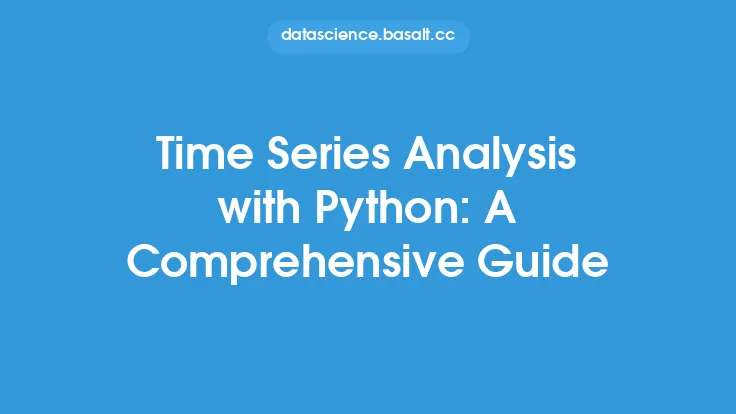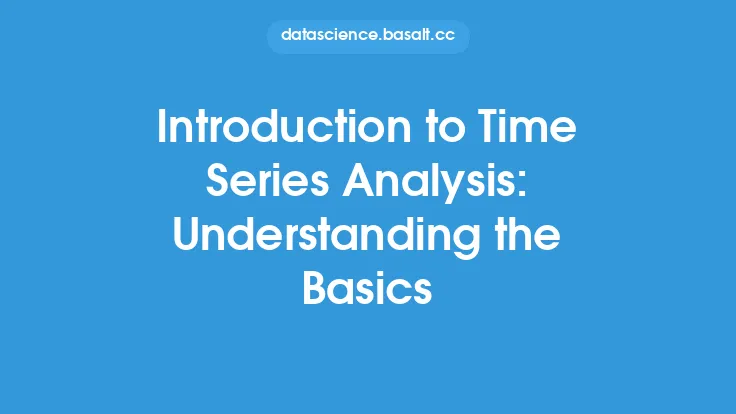Predictive modeling is a crucial aspect of data mining, and when it comes to time series forecasting and analysis, it plays a vital role in helping organizations make informed decisions about future outcomes. Time series data, which is a sequence of data points measured at regular time intervals, is commonly found in various fields such as finance, economics, weather forecasting, and more. The goal of predictive modeling for time series forecasting is to use historical data to forecast future values, enabling organizations to prepare for potential outcomes and make data-driven decisions.
Introduction to Time Series Forecasting
Time series forecasting involves using statistical models to predict future values based on past data. The key characteristics of time series data are trends, seasonality, and residuals. Trends refer to the overall direction or pattern in the data, while seasonality refers to regular fluctuations that occur at fixed intervals. Residuals, on the other hand, are the random variations in the data that are not explained by trends or seasonality. Understanding these characteristics is essential for building effective predictive models for time series forecasting.
Types of Predictive Models for Time Series Forecasting
There are several types of predictive models that can be used for time series forecasting, including:
- Autoregressive (AR) models: These models use past values to forecast future values, based on the assumption that the current value is a function of past values.
- Moving Average (MA) models: These models use the errors (residuals) from past forecasts to forecast future values, based on the assumption that the current error is a function of past errors.
- Autoregressive Integrated Moving Average (ARIMA) models: These models combine the features of AR and MA models, and are commonly used for time series forecasting.
- Exponential Smoothing (ES) models: These models use a weighted average of past observations to forecast future values, with more recent observations given more weight.
- Seasonal ARIMA (SARIMA) models: These models are an extension of ARIMA models, and are used to forecast time series data with strong seasonal components.
- Vector Autoregression (VAR) models: These models are used to forecast multiple time series, and are based on the assumption that each series is a function of past values of all the series.
Techniques for Time Series Analysis
In addition to predictive models, there are several techniques that can be used for time series analysis, including:
- Time series decomposition: This involves breaking down the time series into its component parts, such as trends, seasonality, and residuals.
- Spectral analysis: This involves analyzing the frequency components of the time series, to identify patterns and cycles.
- Cross-correlation analysis: This involves analyzing the relationships between multiple time series, to identify patterns and correlations.
- Time series clustering: This involves grouping similar time series together, to identify patterns and structures.
Evaluation Metrics for Time Series Forecasting
Evaluating the performance of predictive models for time series forecasting is crucial, and there are several metrics that can be used, including:
- Mean Absolute Error (MAE): This measures the average difference between forecasted and actual values.
- Mean Squared Error (MSE): This measures the average squared difference between forecasted and actual values.
- Root Mean Squared Error (RMSE): This measures the square root of the average squared difference between forecasted and actual values.
- Mean Absolute Percentage Error (MAPE): This measures the average absolute difference between forecasted and actual values, expressed as a percentage.
Challenges and Limitations of Predictive Modeling for Time Series Forecasting
While predictive modeling for time series forecasting can be highly effective, there are several challenges and limitations that need to be considered, including:
- Non-stationarity: Time series data can be non-stationary, meaning that the underlying patterns and relationships can change over time.
- Noise and outliers: Time series data can be noisy and contain outliers, which can affect the accuracy of predictive models.
- Multivariate relationships: Time series data can be influenced by multiple variables, which can make it challenging to identify the underlying relationships.
- Model selection and hyperparameter tuning: Selecting the right predictive model and tuning its hyperparameters can be challenging, and requires careful evaluation and validation.
Real-World Applications of Predictive Modeling for Time Series Forecasting
Predictive modeling for time series forecasting has numerous real-world applications, including:
- Financial forecasting: Predicting stock prices, currency exchange rates, and other financial metrics.
- Weather forecasting: Predicting temperature, precipitation, and other weather conditions.
- Demand forecasting: Predicting demand for products and services, to inform inventory management and supply chain decisions.
- Energy forecasting: Predicting energy demand and supply, to inform grid management and resource allocation decisions.
- Traffic forecasting: Predicting traffic flow and congestion, to inform transportation planning and management decisions.
Conclusion
Predictive modeling for time series forecasting and analysis is a powerful tool for organizations to make informed decisions about future outcomes. By understanding the characteristics of time series data, selecting the right predictive models, and evaluating their performance, organizations can unlock the full potential of their data and drive business success. While there are challenges and limitations to predictive modeling for time series forecasting, the benefits of accurate forecasting and analysis make it an essential aspect of data mining and predictive analytics.





